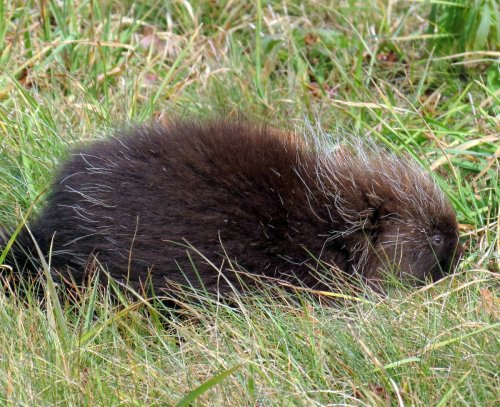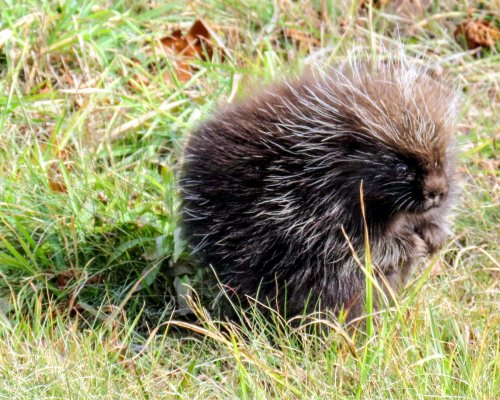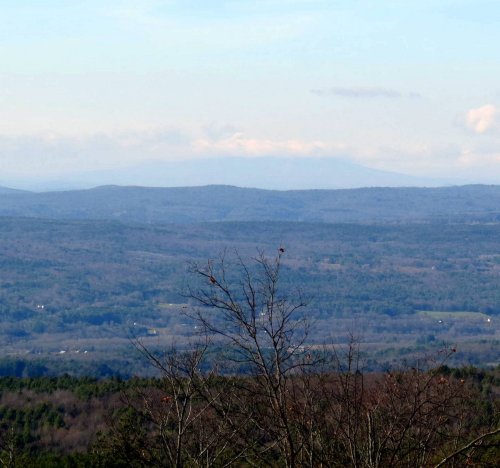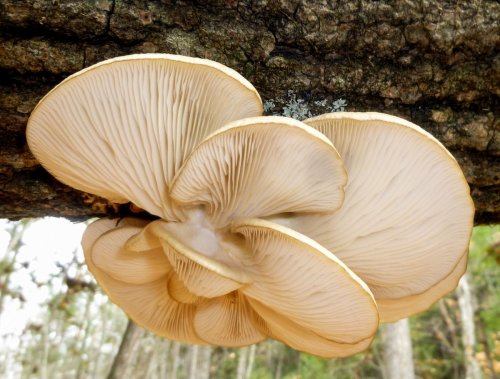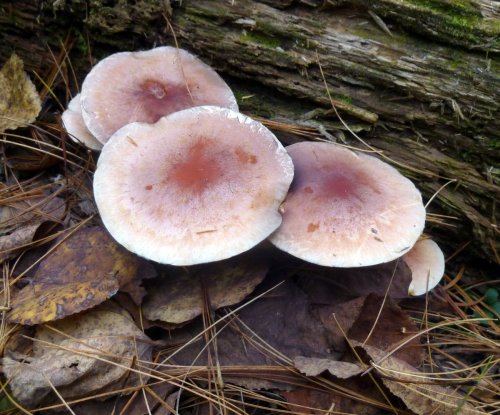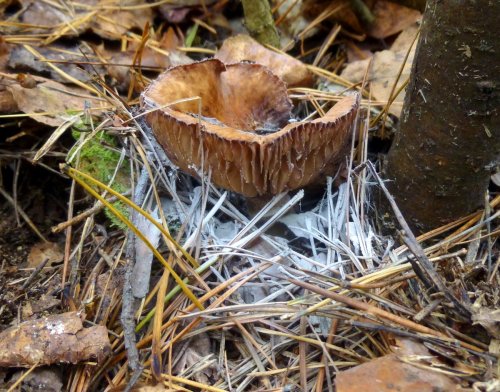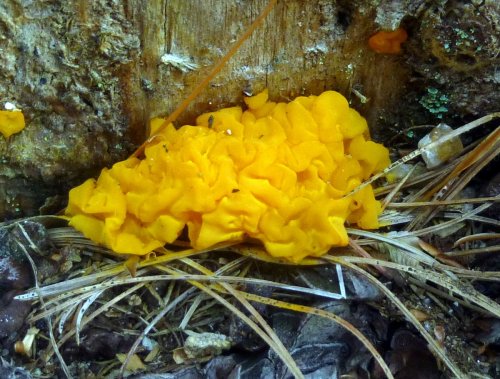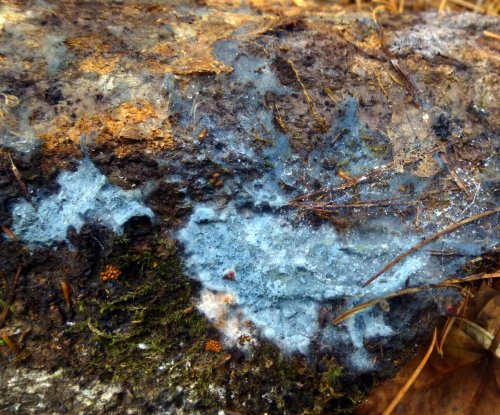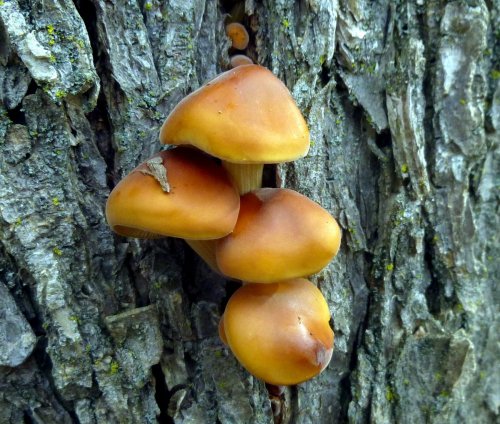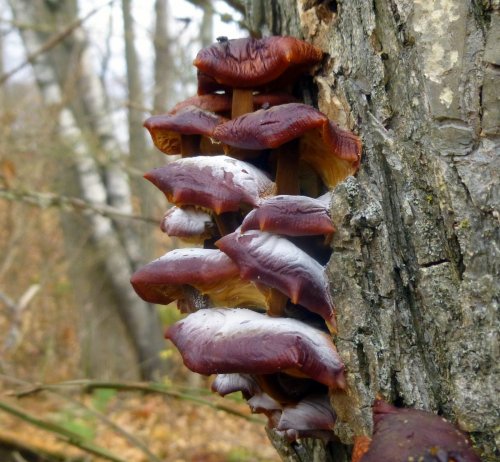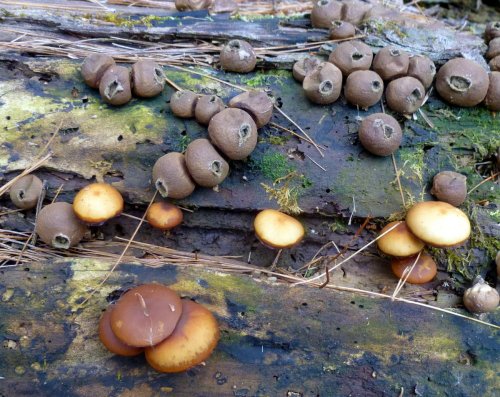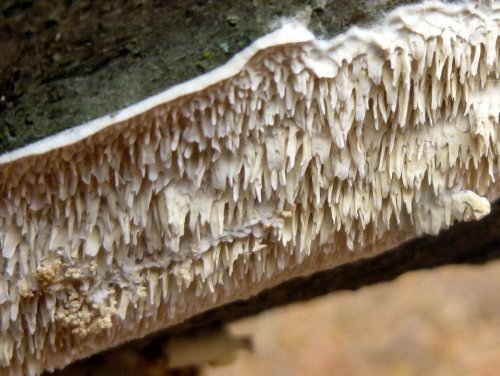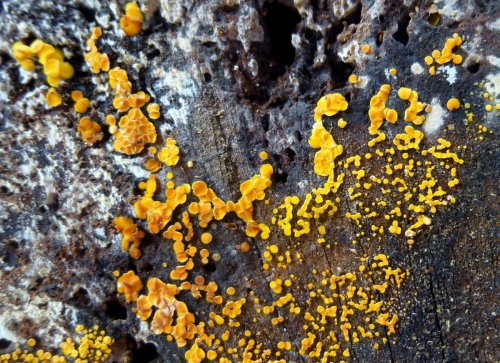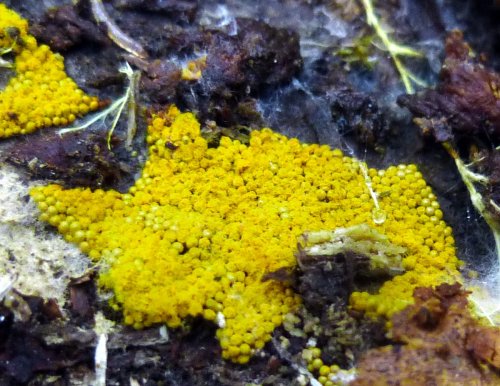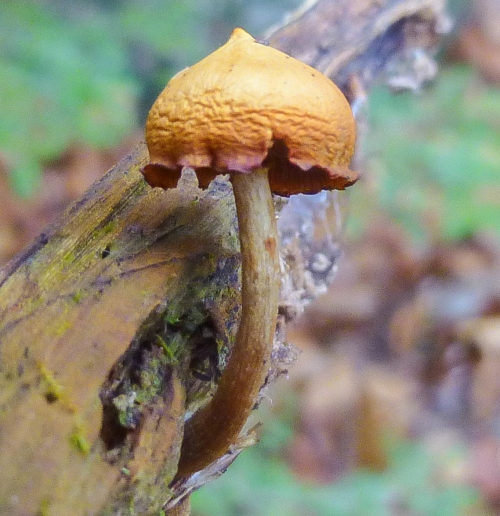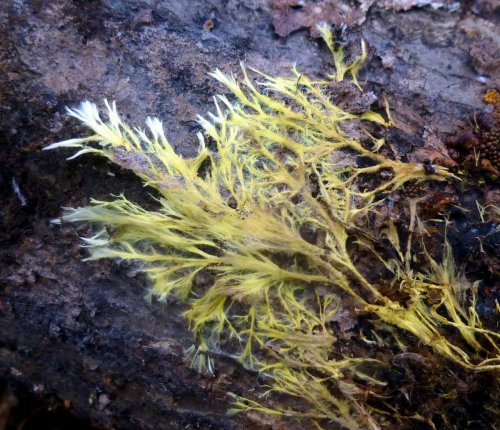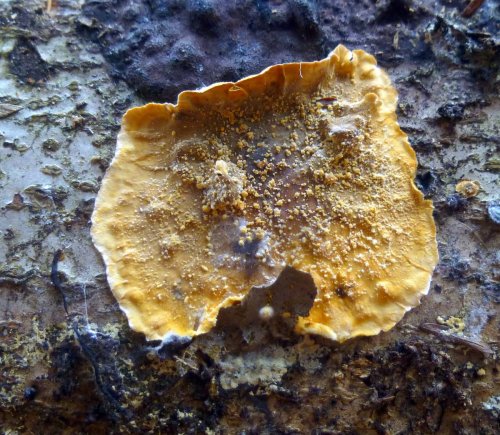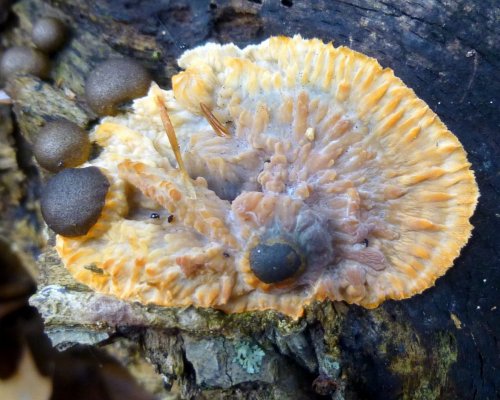I’m not seeing many now, possibly because the nights are getting cooler, but I was seeing at least one monarch butterfly each day for quite a while. That might not seem like many but I haven’t seen any over the last couple of years so seeing them every day was a very noticeable and welcome change.
For the newcomers to this blog; these “things I’ve seen posts” contain photos of things I’ve seen which, for one reason or another, didn’t fit into other posts. They are usually recent photos but sometimes they might have been taken a few weeks ago, like the butterflies in this post. In any event they, like any other post seen here, are simply a record of what nature has been up to in this part of the world.
After a rest the knapweeds started blooming again and clouded sulfur butterflies (I think) were all over them. I’ve seen a lot of them this year. They always seem to come later in summer and into fall and I still see them on warm days.
This clouded sulfur had a white friend that I haven’t been able to identify. I think this is only the second time I’ve had 2 butterflies pose for the same photo.
I saw lots of painted ladies on zinnias this year; enough so I think I might plant some next year. I like the beautiful stained glass look of the undersides of its wings.
The upper surface of a painted lady’s wings look very different. This one was kind enough to land just in front of me in the gravel of a trail that I was following.
A great blue heron stood motionless on a rock in a pond, presumably stunned by the beauty that surrounded it. It was one of those that likes to pretend it’s a statue, so I didn’t wait around for what would probably be the very slow unfolding of the next part of the story.
Three painted turtles all wanted the same spot at the top of a log in the river. They seem to like this log, because every time I walk by it there are turtles on it.
Three ducks dozed and didn’t seem to care who was where on their log in the river.
Ducks and turtles weren’t the only things on logs. Scaly pholiota mushrooms (Pholiota squarrosa) covered a large part of this one. This mushroom is common and looks like the edible honey mushroom at times, but it is not edible and is considered poisonous. They are said to smell like lemon, garlic, radish, onion or skunk, but I keep forgetting to smell them. They are said to taste like radishes by those unfortunate few who have tasted them.
There are so many coral mushrooms that look alike they can be hard to identify, but I think this one might have been yellow tipped coral (Ramaria formosa.) Though you can’t see them in this photo its stems are quite thick and stout and always remind me of broccoli. Some of these corals get quite big and they often form colonies. This one was about as big as a cantaloupe and grew in a colony of about 8-10 examples, growing in a large circle.
Comb tooth fungus (Hericium ramosum) grows on well-rotted logs of deciduous trees like maple, beech, birch and oak. It is on the large side; this example was about as big as a baseball, and its pretty toothed branches spill downward like a fungal waterfall. It is said to be the most common and widespread species of Hericium in North America, but I think this example is probably only the third one I’ve seen in over 50 years of looking at mushrooms.
Something I see quite a lot of in late summer is the bolete called Russell’s bolete (Boletellus russellii.) Though the top of the cap isn’t seen in this shot it was scaly and cracked, and that helps tell it from look alikes like the shaggy stalked bolete (Boletellus betula) and Frost’s bolete (Boletus frostii.) All three have webbed stalks like that seen above, but their caps are very different.
Sometimes you can be seeing a fungus and not even realize it. Or in this case, the results of a fungus. The fungus called Taphrina alni attacks female cone-like alder (Alnus incana) catkins (Strobiles) and chemically deforms part of the ovarian tissues, causing long tongue like galls known as languets to form. These galls will persist until the strobiles fall from the plant; even heavy rain and strong winds won’t remove them. Though I haven’t been able to find information on its reproduction I’m guessing that the fungal spores are produces on these long growths so the wind can easily take them to other plants.
Elderberries (Sambucus canadensis) are having a great year. I don’t think I’ve ever seen as many berries (drupes) as we have this year. The berries are edible but other parts of the plant contain calcium oxalate and are toxic. Native Americans dried them for winter use and soaked the berry stems in water to make a black dye that they used on their baskets.
Native cranberries (Vaccinium macrocarpon) are also having a good year. The Pilgrims named this fruit “crane berry” because they thought the flowers looked like Sandhill cranes. Native Americans used the berries as both food and medicine, and even made a dye from them. They taught the early settlers how to use the berries and I’m guessing that they probably saved more than a few lives doing so. Cranberries are said to be one of only three fruits native to North America; the other two being blueberries and Concord grapes, but I say what about the elderberries we just saw and what about crab apples? There are also many others, so I think whoever said that must not have thought it through.
In my own experience I find it best to leave plants with white berries alone because they are usually poisonous, and no native plant illustrates this better than poison ivy (Toxicodendron radicans.) Though many birds can eat its berries without suffering, when most humans so much as brush against the plant they can itch for weeks afterward, and those who are particularly sensitive could end up in the hospital. I had a friend who had to be hospitalized when his eyes became swollen shut because of it. Eating any part of the plant or even breathing the smoke when it is burned can be very dangerous.
Native bluestem grass (Schizachyrium scoparium) catches the light and glows in luminous ribbons along the roadsides. This is a common grass that grows in every U.S. state except Nevada and Washington, but is so uncommonly beautiful that it is grown in gardens. After a frost it takes on a reddish purple hue, making it even more beautiful.
It is the way its seed heads reflect the light that makes little bluestem grass glow like it does.
I think the above photo is of the yellow fuzz cone slime mold (Hemitrichia clavata.) The most unusual thing about this slime mold is how it appears when the weather turns colder in the fall. Most other slime molds I see grow during warm, wet, humid summers but I’ve seen this one even in winter. Though it looks like it was growing on grass I think there must have been an unseen root or stump just under the soil surface, because this one likes rotten wood. It starts life as tiny yellow to orange spheres (sporangia) that finally open into little cups full of yellowish hair like threads on which the spores are produced.
I was looking at lichens one day when I came upon this grasshopper. The lichens were on a fence rail and so was the grasshopper, laying eggs in a crack in the rail. This is the second time I’ve seen a grasshopper laying eggs in a crack in wood so I had to look it up and see what it was all about. It turns out that only long horned grasshoppers lay eggs in wood. Short horned grasshoppers dig a hole and lay them in soil. They lay between 15 and 150 eggs, each one no bigger than a grain of rice. The nymphs will hatch in spring and live for less than a year.
The gypsy moth egg cases I’ve seen have been smooth and hard, but this example was soft and fuzzy so I had to look online at gypsy moth egg case examples. From what I’ve seen online this looks like one. European gypsy moths were first brought to the U.S. in 1869 from Europe to start a silkworm business but they escaped and have been in the wild ever since. In the 1970s and 80s gypsy moth outbreaks caused many millions of dollars of damage across the northeast by defoliating and killing huge swaths of forest. I remember seeing, in just about every yard, black stripes of tar painted around tree trunks or silvery strips of aluminum foil wrapped around trunks. The theory was that when the caterpillars crawled up the trunk of a tree to feed they would either get stuck in the tar or slip on the aluminum foil and fall back to the ground. Today, decades later, you can still see the black stripes of tar around some trees. Another gypsy moth population explosion happened in Massachusetts last year and that’s why foresters say that gypsy moth egg cases should be destroyed whenever they’re found. I didn’t destroy this one because at the time I wasn’t positive that it was a gypsy moth egg case. If you look closely at the top of it you can see the tiny spherical, silvery eggs. I think a bird had been at it.
Folklore says that the wider the orangey brown band on a wooly bear caterpillar is, the milder the winter will be. If we’re to believe it then this winter will be very mild indeed, because this wooly bear has more brown on it than I’ve ever seen. In any event this caterpillar won’t care, because it produces its own antifreeze and can freeze solid in winter. Once the temperatures rise into the 40s F in spring it thaws out and begins feeding on dandelion and other early spring greens. Eventually it will spin a cocoon and emerge as a beautiful tiger moth. From that point on it has only two weeks to live.
This bumblebee hugged a goldenrod flower head tightly one chilly afternoon. I thought it had died there but as I watched it moved its front leg very slowly. Bumblebees sleep and even die on flowers and they are often seen at this time of year doing just what this one was doing. I suppose if they have to die in winter like they do, a flower is the perfect place to do so. Only queen bumblebees hibernate through winter; the rest of the colony dies. In spring the queen will make a new nest and actually sit on the eggs she lays to keep them warm, just like birds do.
I’ll end this post the way I started it, with a monarch butterfly. I do hope they’re making a comeback but there is still plenty we can do to help make that happen. Planting zinnias might be a good place to start. At least, even if the monarchs didn’t come, we’d still have some beautiful flowers to admire all summer.
I meant to do my work today, but a brown bird sang in the apple tree, and a butterfly flitted across the field, and all the leaves were calling. ~Richard le Gallienn
Thanks for coming by.















































